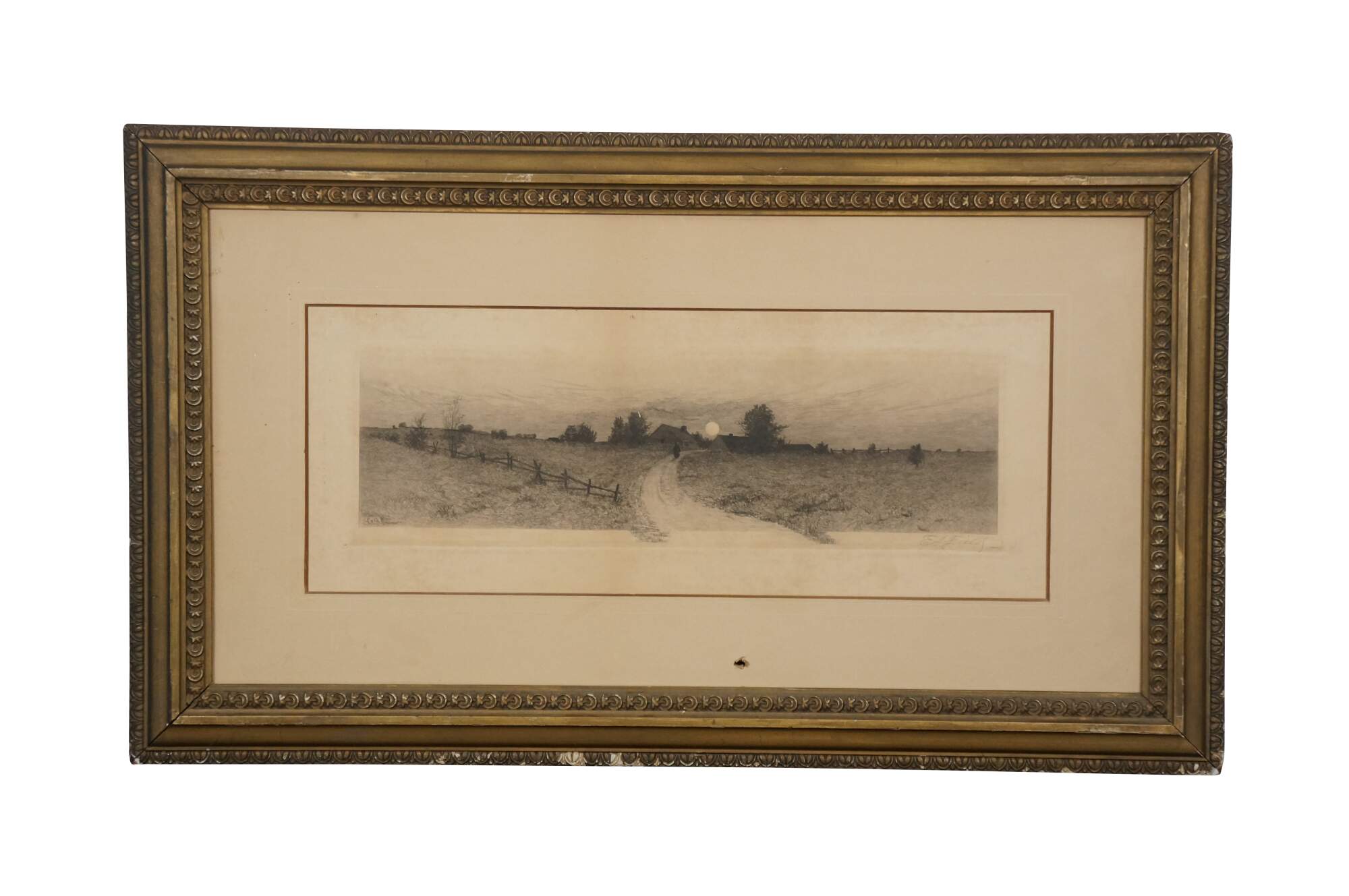
Shipping:
Free Shipping Included
Delivery:
Estimated 2-15 Business Days
Payments:
Credit Card, Check, Cash, PayPal, Apple Pay, Venmo
Returns:
30 Days 100% Money Back Guarantee, Buyer Pays Return Shipping
Description
Late 19th century black and white landscape etching by Edward Loyal Field. Lone figure walking down a moonlit country road. Signed in plate E.L. Field, lower left. Pencil signed, lower right. Beveled gilt wood frame carved with egg-and-dart and star-and-moon borders; white mat.
"Edward Loyal Fields (January 4, 1856 – March 22, 1914) (aka E. L. Field ; Edward L. Field ; E. Loyal Field ; Edward Field) was an American artist renowned for his rural landscape drawings and etchings. He utilized various mediums, including pen and ink, oil, watercolor, and graphite, and his primary techniques encompassed drawing, painting, and etching. Fields is especially noted for his idyllic depictions of towns, farmhouses, and landscapes. Edward Loyal Fields was born on January 4, 1856, in Galesburg, Knox, Illinois, to Loyal Case Field, a machinist, inventor, and manufacturer of machinery, and Clara Armeda (Davison) Field, a housewife. He grew up with three siblings—Frank Smith Field, Kate Elnora Field, and Carrie Luella Field—though the latter two sadly died in infancy. Fields spent the first part of his life in the Midwest, residing in Galesburg from 1856 to 1874, and briefly in 1880. In 1874, he relocated to Ithaca, New York, where he began studying at Cornell University. His formal art education started here and continued until 1878. Following this, Fields moved to Paris, France, to study at the esteemed Academie Julian under Charles Auguste Carolus Emile Duran, from 1878 to 1879. Duran’s influence was significant in shaping Fields’s artistic style and approach. Fields began to identify as a professional artist by 1880. His work, characterized by detailed rural landscape drawings and etchings, was recognized across the Midwest, East Coast, and Europe. Fields moved between various locations throughout his career. He resided in Paris from 1879 to 1882, in New York from 1885 to 1900, and again from 1905 to 1914, as well as in Delaware, New York from 1900 to 1905. Brief periods were also spent in Boston, Halifax, London, Nutley, and Delaware. Throughout his career, Fields exhibited his work with prestigious art establishments, including the Salmagundi in New York, National Academy of Design in New York, Pennsylvania Academy of the Fine Arts in Philadelphia, Carnegie in Pittsburgh, and Chicago Art Institute. Fields was a resident artist member at Salmagundi from 1899 until his death in 1914, where his work was highly praised, winning the Inness prize in 1904 and the Shaw prize in 1905. Fields married Flora (Stark) Field on November 9, 1891, in Bloomsbury, England. They had one daughter, Catherine Field, who was born in Nutley, New Jersey, in 1892. Fields died on March 22, 1914, in New York, New York, from pneumonia. He was 58 years old. His legacy continues to influence and inspire artists and art enthusiasts worldwide, serving as a testament to his exceptional talent and passion for rural landscape artistry." (Source: Salmagundi)
Condition
Wear and distressing to frame, chipping, paint loss, no glass; discoloration, foxing to print, puncture to mat.
Dimensions
32.5" x 0.5" x 19" / Sans Frame - 22" x 8.5" (Width x Depth x Height)